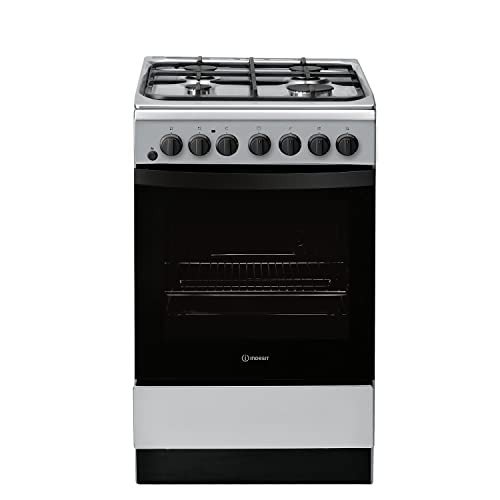Understanding Oven Hobs: The Heart of Culinary Crafting
In the realm of modern cooking areas, the oven hob stands out as an important device. Not only is it a main component for cooking a variety of meals, but it likewise affects kitchen visual appeals, performance, and efficiency. This short article digs into the types of oven hobs, their functions, advantages, and maintenance suggestions. In Cheapest Fan Oven , it resolves some often asked questions to supply a thorough understanding of this vital kitchen device.
Kinds Of Oven Hobs
Oven hobs can be classified into numerous types based on their energy source and design. Understanding these variations can assist customers make notified decisions when choosing the perfect hob for their kitchen requires.
1. Gas Hobs
Gas hobs use gas or propane as fuel, providing precise temperature level control and rapid heat. They are favored by many chefs for their ability to provide visual feedback through flame.
Pros:
- Quick heat-up time.
- Accurate temperature adjustments.
- Compatible with all kinds of cookware.
Cons:
- Requires a constant gas supply.
- Safety issues with open flames.
- Needs more maintenance.
2. Electric Hobs
Electric hobs are powered by electrical power and feature smooth glass or ceramic surfaces. They frequently are available in two types: coil and strong.
Pros:
- Sleek look.
- No open flames, decreasing security risks.
- Easy to clean up.
Cons:
- Slower to warm up and cool off.
- May need particular pots and pans (induction).
- Some may have uneven heat circulation.
3. Induction Hobs
Induction hobs utilize electro-magnetic energy to straight heat pots and pans. They just work with ferromagnetic pots and pans.
Pros:
- Very energy-efficient.
- Fast heating and cooling times.
- Safe, as the surface area remains fairly cool.
Cons:
- Limited to specific types of pots and pans.
- Higher initial expense.
- Can produce noise when in use.
4. Strong Plate Hobs
These electric hobs include solid metal plates that warm up and keep heat for cooking.
Pros:
- Durable and reputable.
- Straightforward operation.
Cons:
- Takes time to warm up.
- Less effective than induction and gas models.
| Hob Type | Heat Source | Aesthetic appeals | Maintenance |
|---|---|---|---|
| Gas Hobs | Gas | Traditional | Moderate |
| Electric Hobs | Electricity | Modern/Sleek | Low |
| Induction Hobs | Electromagnetic | Contemporary | Low |
| Strong Plate Hobs | Electricity | Timeless | Typical |
Functions to Consider When Choosing an Oven Hob
When picking the ideal oven hob for your kitchen, there are several necessary functions to take into account. These include:
- Size: Ensure the hob fits the designated space in your kitchen.
- Variety of Burners: Consider your cooking style and the number of burners you'll require.
- Control Type: Look for user-friendly controls, whether touch-sensitive or knobs.
- Safety Features: Many modern hobs consist of safety measures like flame failure devices or child locks.
- Energy Efficiency: Choose energy-efficient designs to conserve on energy expenses and lower your ecological impact.
Benefits of Using an Oven Hob
The oven hob supplies several advantages that cater to both amateur cooks and expert chefs. Here are some key benefits:
- Versatility: Whether boiling, frying, simmering, or sautéing, an oven hob accommodates different cooking strategies.
- Convenience: Many hobs come with additional features like timers and automated shut-off systems for included benefit in hectic cooking areas.
- Enhanced Cooking Control: The instant heat reactions of gas and induction hobs enable for much better control over cooking temperature levels.
- Style Enhancement: Modern hobs can boost the general aesthetic of a kitchen, adding a modern touch.
Upkeep Tips for an Oven Hob
To guarantee the durability and performance of an oven hob, proper upkeep is vital. Here are some upkeep ideas:
Regular Cleaning:
- Use a soft fabric and mild cleaning agent to tidy surfaces after each usage.
- For induction and ceramic hobs, prevent abrasive cleaners to avoid scratching.
Inspect for Wear and Tear:
- Inspect rubber seals and connections in gas hobs regularly for any damages or leaks.
- Make sure electrical connections are safe in electric hobs.
Professional Servicing:
- Schedule regular upkeep checks with a qualified professional to avoid major problems.
The oven hob is a vital part in any kitchen, functioning as a focal point for culinary ventures. Whether choosing gas, electric, or induction, understanding the different types, features, and upkeep requirements is vital for making a well-informed decision. A well-chosen hob not only enhances cooking effectiveness but likewise boosts the general kitchen experience.
Frequently Asked Questions (FAQs)
1. What kind of hob is best for a beginner?
Electric hobs are typically preferred by newbies due to their ease of use and upkeep.
2. Can I utilize all pots and pans on an induction hob?
No, induction hobs require ferromagnetic pots and pans for them to work effectively.
3. How do I know if my gas hob is working efficiently?
Routinely look for even flame distribution and listen for any hissing sounds that might indicate leakages. If in doubt, speak with an expert.
4. Is a higher cost constantly much better for hobs?
Not always. While higher-priced models might use innovative functions, a number of mid-range items provide outstanding performance and longevity.
5. Can I install a hob myself?
It is suggested to work with a professional, especially for gas hobs, due to security issues and regional guidelines.
By comprehending the nuances of oven hobs, home cooks can make a knowledgeable decision that lines up with their cooking ambitions and kitchen designs. Selecting the ideal hob enhances both the cooking experience and kitchen aesthetic appeals, making it a crucial financial investment for any home.

